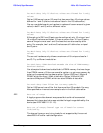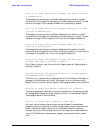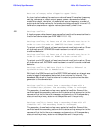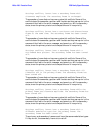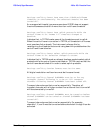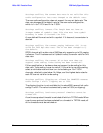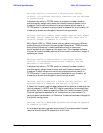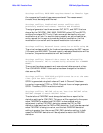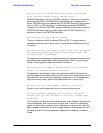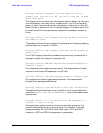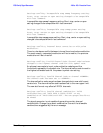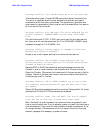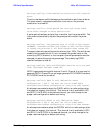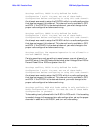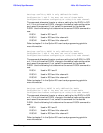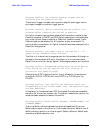
Error Messages 37
ESG Family Signal Generators -299 to -200: Execution Errors
Settings conflict; FM2/PM2 value set greater than FM1/PM1
value. FM1/PM1 changed to match FM2/PM2 value.
FM2/PM2 deviation must be FM1/PM1 deviation. This error is reported
when both FM1/PM1 and FM2/PM2 are enabled and an adjustment to
either FM2/PM2 deviation causes the FM2 or PM2 deviation to be greater
than the FM1 or PM1 deviation. It is also be reported as FM2/PM2 is
turned on, and the last FM1/PM1 deviation setting is less than the current
FM2/PM2 deviation setting. In both cases the FM1/PM1 deviation is
adjusted to match the FM2/PM2 deviation.
Settings conflict; FM & PM not allowed.
There is a hardware conflict between FM and PM. The most recently
requested modulation will be turned on, the previous modulation will be
turned off.
Settings conflict; The format must be on and fully configured
for use before being specified as the secondary frame. The
secondary frame is unchanged.
The secondary frame setup must be completely configured as a stand-alone
setup before being selected for use as a secondary frame. It must have a
format, framing, and at least one timeslot turned on.
Settings conflict; Frame in Pattern RAM is from a different
format. The secondary frame is unchanged.
The secondary frame feature has many potential conflicts. Some of the
conflicts leave the secondary pattern and its state as they were prior to the
command that led to the error message, and some turn off the secondary
state, since the primary state is not compatible and it has priority.
Settings conflict; Frame repeat changed to continuous.
Single is not a valid repeat setting for an external data source.
Settings conflict; Frequency list and dwell list are of
unequal size. Set one list equal to size one, or make their
sizes equal.
The frequency list has more than one element and the dwell list has more
than one element, and they are not of equal size. If any of the frequency,
power, or dwell lists have more than one element, they must all have the
same number of elements. A list of a single element is the same as a list of
an equal size with the single element repeated the necessary number of
times.



